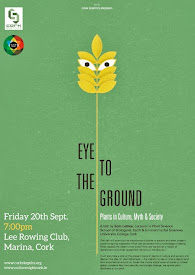Ever the romantic, I bought my beloved a clump of dying plant tissue to put in a vase on the kitchen window. Of course I didn't put it quite like that when I brought them home but it's good to remember what you are buying when you pick up a bunch of flowers.
From the moment they are cut to the time when they end up in your wheelie bin, it's a battle against the inevitable to keep cut flowers alive and Spanish scientists have now shown that sugar and the plant hormones in the flowers themselves are key to keeping them looking their best long enough for your partner to forgive you for whatever you've done to offend.
A flower is a thing of beauty to be enjoyed but from a biological point of view it has a definitive job to do. The huge diversity in flower anatomy, colour and scent is largely related to pollination. Plants have evolved flowers to attract insects, birds and other animals to disperse pollen and fertilise the female reproductive organs.
From the colossal flowers of
Rafflesia arnoldii – the largest flowers in the world at up to a metre in diameter, to the minute blooms of
Wolffia species – the smallest in the world, the simple goal is the same.
Once fertilisation has occurred, the plant has no need for such gaudy displays and the petals are usually the first parts of the flower to show signs of decay once their job is done.
To counteract the short vase-life of flowers, a packet of 'flower food' is often included when you visit the florist. These products usually contain some sugar to act as an energy source; a compound to alter the acidity of the water to make it more suitable for the flowers; and a disinfectant to kill off any bacteria which could speed up decay in the vase.
Now researchers using lilies (
Lilium longiflorum)
have shown that adding sugar to the vase speeds up the opening of the flower and slows down its decay but doesn't affect the rate at which the petals drop off the flower - a sure sign your peace offering should have been binned already. The overall effect of these changes is a longer flowering window and a happy customer.
Laia Arrom and Sergi Munné-Bosch found that adding sucrose to the vase accelerated flower opening by 2.4 days and delayed its decay by 24 hours. Their work was published in the journal
Plant Science earlier this year.
Further analysis of how the tissues of the flower use this sucrose showed that the petals and the male parts of the flower took up lots of the sugar and used it quickly. The female parts of the flower, on the other hand, took up sucrose and held on to it - a reserve, perhaps, for the female element's new role as a seed-bearer.
So, how did adding simple sugar to the distilled water in the vase increase the length of time the flowers kept their condition? Crucially, the addition of sucrose to the vase seemed to alter the balance of hormones in the flower tissues.
Hormones serve much the same function in plants as they do in animals - acting as chemical signals which can be transmitted over long distances.
It was already known that a particular group of plant hormones called cytokinins can delay the onset of floral decay and, sure enough, this recent study showed that a cytokinin called zeatin riboside was accumulated in the flowers, prolonging their vase-life.
Another plant hormone, abscicic acid, is known to speed-up the decay of petals and the researchers found that flowers treated with sucrose had 57% less absicsic acid compared to control flowers.
The cut flower industry is big business. A
recent report (pdf) on the industry described it as being worth over US$100 billion a year worldwide. The UK share alone is worth around £2.2 billion - a 250% increase over the last twenty years. That's a lot of husbands doing a lot of apologising.
Whatever we're buying them for, consumers like flowers that stay alive long enough to enjoy them. This latest research suggests we're doing the right thing by adding sugar. The extra energy source is able to alter the balance of plant hormones enough to get an extra few days of enjoyment out of the blooms. If that doesn’t work, you may need to try a box of chocolates.







































































